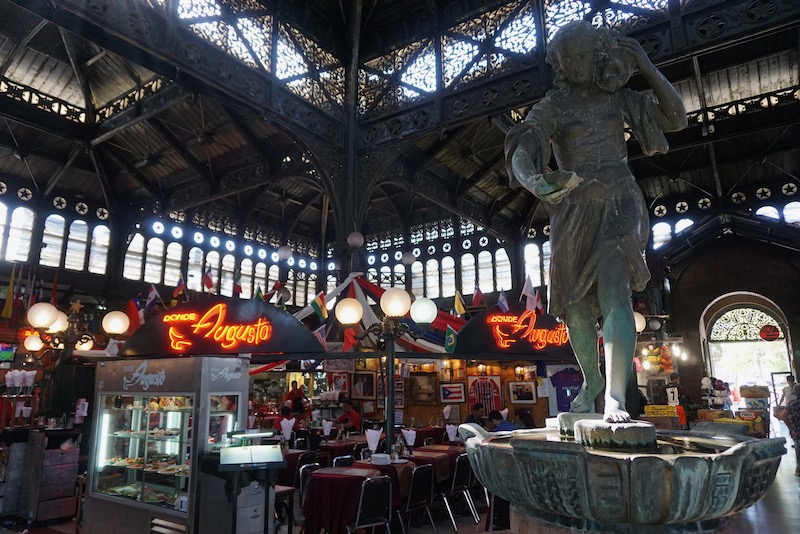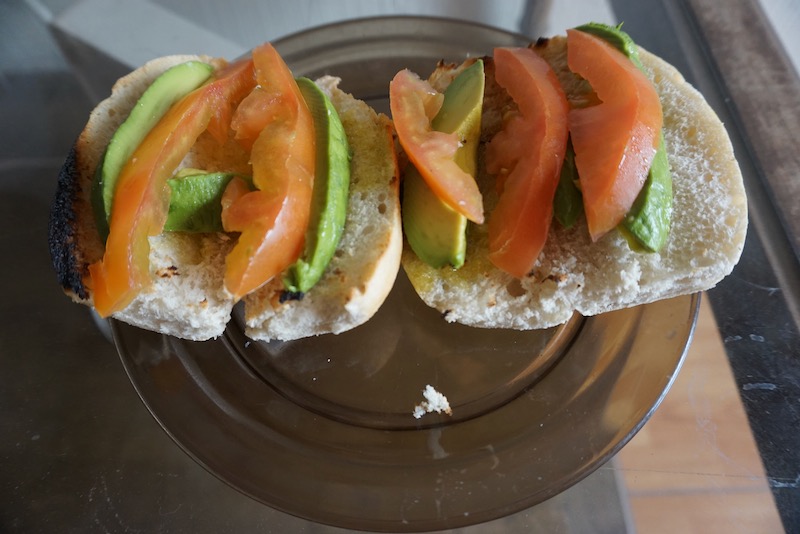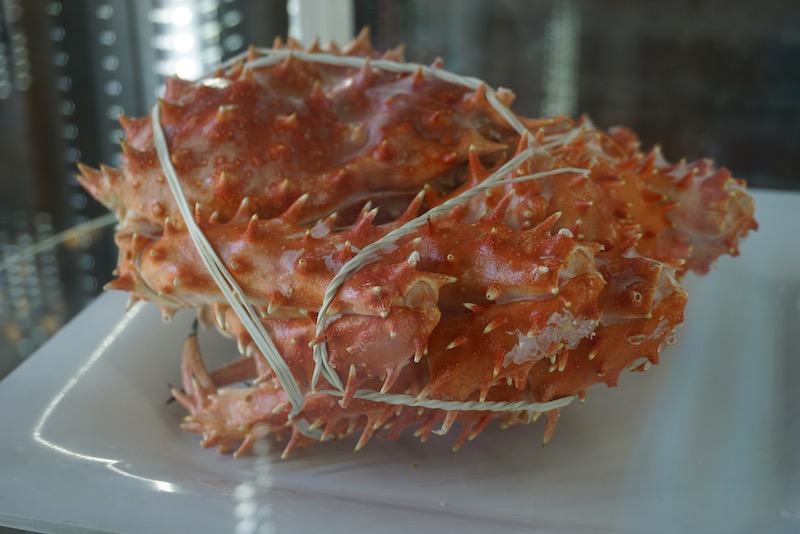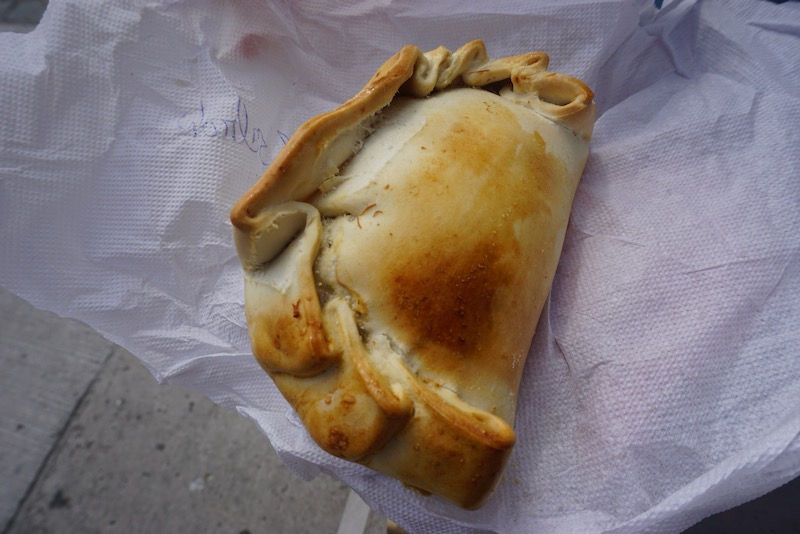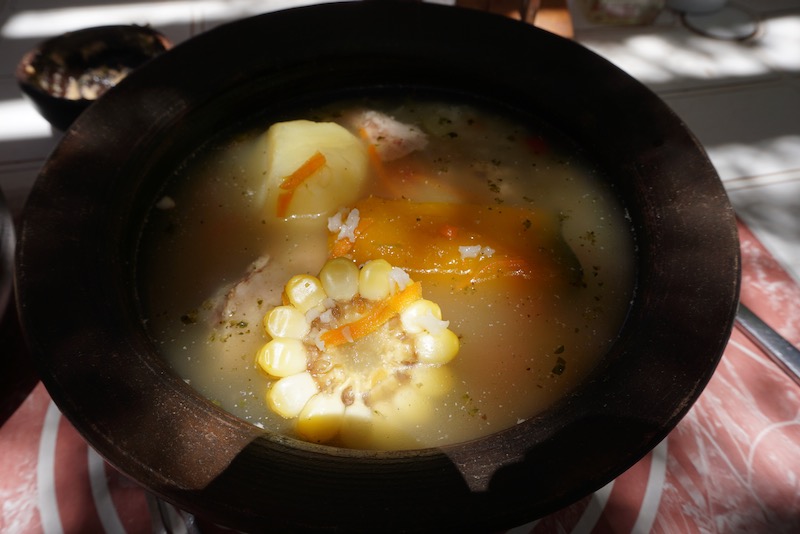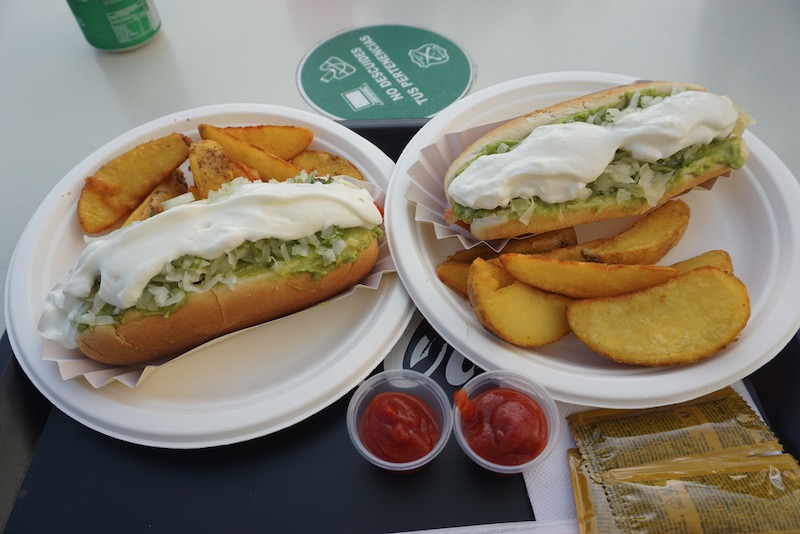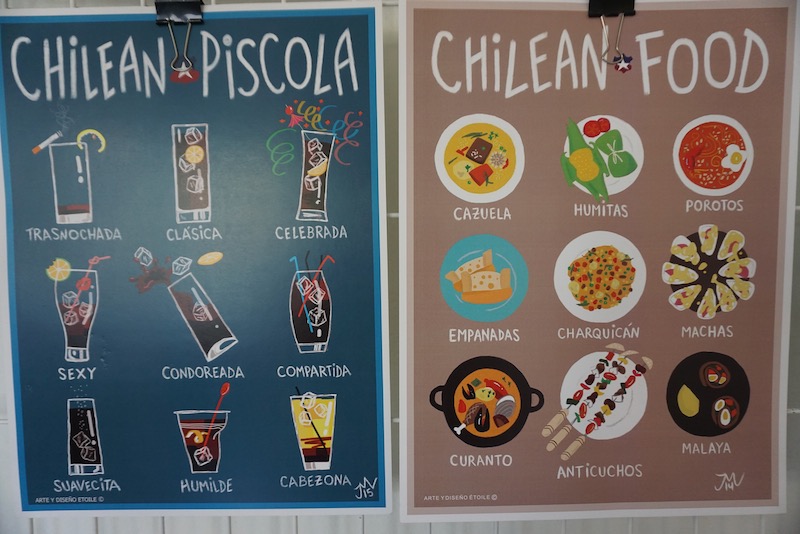¿Cómo es la comida chilena? Posted by sasha on Feb 11, 2021 in Uncategorized
In case you haven’t noticed by now, we love talking about food here on the Spanish blog. You can find some of my past posts introducing the cuisine from Mexico, Peru, and Colombia, for example. In today’s post I’ll continue our gastronomic tour around Latin America by answering the question “¿Cómo es la comida chilena?” (What is Chilean food?).
An Intro to Chilean Cuisine
La comida chilena es una mezcla entre la tradición indígena y el aporte colonial español (Chilean food is a mix between indigenous tradition and Spanish colonial contribution). Some typical food items of the indigenous included papas, choclo, frijoles y mariscos (potatoes, maiz, beans, and seafood). The Spaniards brought with them things like trigo, cerdo, carne de vaca y vino (wheat, pork, beef, and wine).
There are other European influences in Chilean cuisine, notably from Germany, France, and Italy, along with some subtle Middle Eastern influences as well. The resulting mixture is known as cocina criolla chilena (Chilean Creole cuisine).
Chile is a country with great ecological and geographic diversity. Es un país con montañas, desiertos y una larga costa (It’s a country with mountains, deserts, and a long coastline). As a result, a wide array of produce is grown here. Some other common crops in Chile include la aceituna, la lúcuma, la quinua, y la palta (olive, lucuma, qinuoa, and avocado). That’s right – avocado is called “palta” here and not “aguacate.” That confused me as well…
There are three distinct regions when it comes to Chilean cuisine: Gastronomía del Norte, Gastronomía del Centro, y Gastronomía del Sur. Because of the long coast, seafood is very prominent in the Chilean diet. This includes la albacora, el atún, el bacalao, la corvina, la merluza, el mero, la palometa, y el pulpo (albacore, tuna, cod, croaker, hake, grouper, pomfret, and octopus).
Common Chilean Dishes
Perhaps the quintessential Chilean dish is the empanada. The most typical varieties include empanadas de queso (cheese empanadas), empanadas de mariscos (seafood empanadas) and empanadas de pino (empanadas with beef). Pino is actually a mixture of beef, onions, raisins, black olives, and hard-boiled eggs. It’s delicious and it’s got me daydreaming about eating them right now!
You can get empanadas de horno (baked) or empanadas fritas (fried). After having plenty of fried empanadas in Colombia, we really enjoyed the baked version in Chile. You don’t feel as guilty about eating them when you don’t end up with a puddle of grease on your plate.
In addition to empanadas, you’ll also find humitas all over the country. These are basically the same as tamales up in Mexico. In Chile they’re made with corn, fresh basil, onion, and butter or lard. Another popular dish is the pastel de choclo, a sweet and savory dish that’s basically a Chilean version of Shepherd’s Pie. It typically has the same pino filling that’s used in empanadas.
Another very common dish in Chile is la cazuela (stew). La cazuela chilena es elaborado con una presa de carne de vacuno, de pollo, de pavo, de ganso o de gallina de campo, más verduras variadas: zapallo, choclo, y papa (The Chilean casserole is made with a prey of beef, chicken, turkey, goose or free-range hen, plus a variety of vegetables: pumpkin, corn, and potato).
Believe it or not, one of the most typical modern dishes of Chile is actually a hot dog. Well, here it’s called a completo. El completo es una salchicha con chucrut, mayonesa, palta, tomate picado y salsa americana (The completo is a sausage with sauerkraut, mayonnaise, avocado, chopped tomato and American sauce). If you’re wondering what “salsa Americana is,” it’s a mix of chopped pickles, pickled onions, and pickled carrots. I’m warning you in advance that they are very, very generous with the mayo. Expect to make a big mess when eating a completo!
There’s a really funny short TV series called “Gringolandia” about a Chilean guy who moves to New York City with his new girlfriend. After being disappointed by NYC’s infamous “dirty water dogs,” he decides to start his own completo cart there. It’s hilarious and a good way to practice some Spanish listening. Just check out this clip:
If you’re in Valparaíso, you’ve got to try the chorillana. Es un plato de papas fritas a las que se le colocan cebollas fritas, longaniza, trozos de carne de res y huevos fritos (It is a plate of french fries to which fried onions, sausage, pieces of beef and fried eggs are placed). It’s an excessive plate of food that’s best shared with friends at a bar, or the day after as you recover from a vicious cruda (hangover).
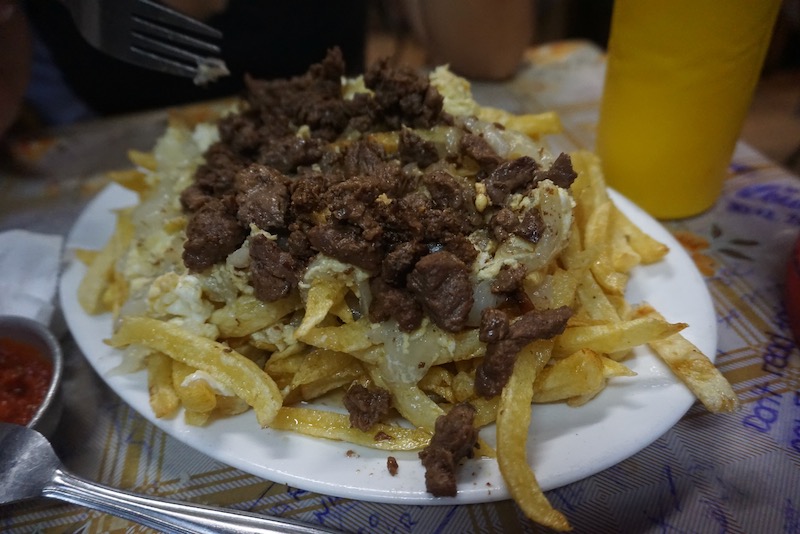
To wash down this absurd plate of food, you can order a drink called el Terremoto (the Earthquake). It’s made with Vino Pipeño, helado de piña y granadina (Pipeño wine, pineapple ice cream and grenadine). We ordered up this ridiculous combo on New Year’s Day after partaking in the city’s epic New Year’s Eve party the night before.
If that cocktail sounds like a bit too much for you, don’t worry – there’s plenty of delicious and reasonably priced wine in Chile. I highly recommend going to a vineyard or two if you visit Chile. There’s always Pisco as well! The Piscola is probably the favorite cocktail of Chileans. I’ll leave the debate about whether Chile or Peru has the better Pisco for another post, though…
Overall, we quite enjoyed the food in Chile. I’m still dreaming about those empanadas de pino and I’ve been writing this post for a few hours now! I’d love to hear your thoughts on Chilean food. Go ahead and leave your answer to the question below in the comments!
¿Has probado la comida chilena? ¿Te gusta o no?
Have you tried Chilean food? Do you like it or not?

Build vocabulary, practice pronunciation, and more with Transparent Language Online. Available anytime, anywhere, on any device.



